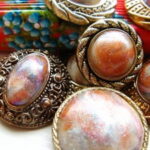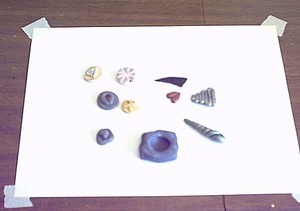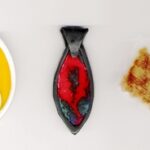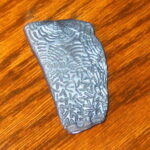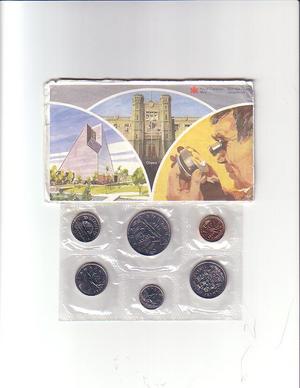Translucent polymer clay is useful for designs that need to be less opaque, but it never cures perfectly clear. Liquid polymer clay has the potential to be much clearer, but you may need to modify some of your techniques to be successful with it. Here are some tips for working with this relatively new form of clay.
The nature of a liquid
Liquid clay is fairly thick, but it will still flow just about anywhere, which means it needs to be contained until it’s cured. You can do this by adding it to indented areas in a solid clay object. You can also cure it in a mold. However, you need to be careful with your choice of mold.
Liquid polymer clay will bond with solid clay when it’s cured. If you use a mold you’ve made from solid clay you’ll need to use a lot of a release (like cornstarch) on the inside surface of the mold before you pour in the liquid clay. Even then there’s a chance you won’t be able to completely remove the object after curing.
The best choice of mold for curing liquid clay seems to be silicone, because the clay doesn’t stick to it. Silicon molds are becoming available now for baking uses, but if you need something smaller check with your local art supply store.
Curing methods
Most people who’ve worked with liquid clay say it needs to be cured at a slightly higher temperature than solid clay – perhaps as much as 300° F. The odor it emits while curing is different and stronger than that of solid clay, but in my experience (and I’m very sensitive to odors) it’s tolerable. If you have concerns about this you can allow for more ventilation while curing liquid clay objects, or just avoid it altogether.
Some people also cure, or at least partially cure, liquid clay with a heat gun (the kind you would use for setting embossing inks). This method is useful for objects that have been covered with a liquid clay “varnish,” as long as you can hold the object in one hand and move it around while training the heat gun on it. I haven’t tried this, but the people who have say to apply the heat in short bursts by moving the gun, or the object, around; this is done to avoid burning the clay. And definitely keep your hands out of the way!
Using and storing liquid clay
Like the solid form of polymer clay, liquid clay contains plasticizer that can react with plastic surfaces if left on them for a long time. If you’re just doing a bit of mixing you can probably get away with a plastic plate or artist palette. But it’s not a good idea to store liquid clay in plastic containers. Instead, use something made out of metal or glass. Remember – the clay won’t harden until it’s cured.
Liquid polymer clay may require a period of adjustment, especially if you’ve worked exclusively with solid clay for a long time. But if you’d like to expand your design possibilities, it’s worth checking out.

